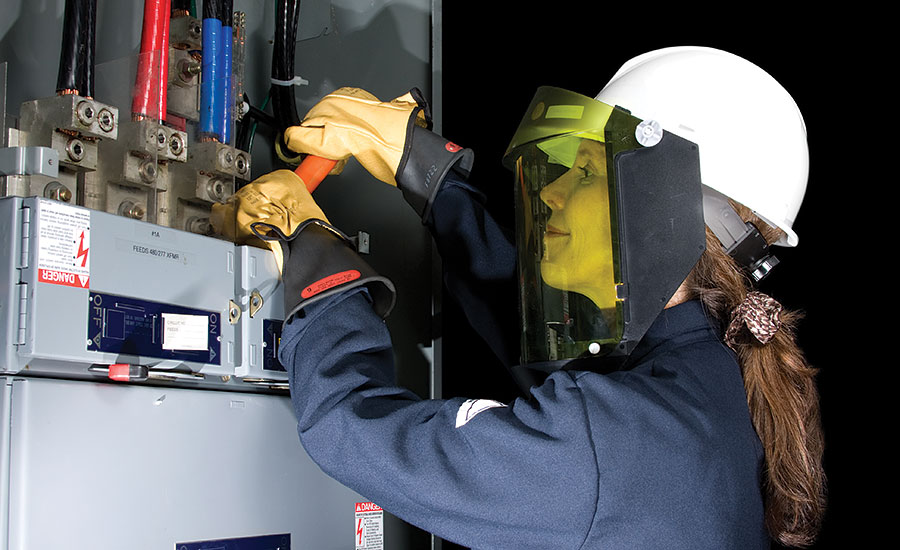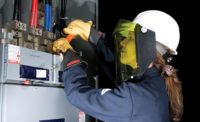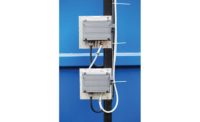If you’re not familiar with electrical safety, it may be difficult to understand the significance of NFPA 70E, which is understandable because it does require a bit of explanation.
What is it?
Often referred to as the ‘how to’ standard, the NFPA 70E is a critical interpretive link between the National Electrical Code (NEC) and OSHA standards, addressing safety and compliance. NFPA 70E is where electrical contractors — i.e., the experts — turn when they need information about how to comply with OSHA standards. The NFPA 70E is updated on a three-year cycle to reflect changes in technology that employers and electrical workers need to be aware of. The 2015 update is notable for increased emphasis on risk assessment and hazard awareness.
Officially, NFPA 70E addresses the safety of workers whose job responsibilities entail interaction with electrical equipment, systems with energized electrical equipment and exposure potential, and circuit parts — so it’s not simply for electricians. For example, maintenance workers, janitorial staff, facilities staff and equipment operators — those employees are not trained electrical workers or contractors, yet each risk exposure to electrical shock. That’s exactly why concepts of this standard are often adapted to other workers whose exposure to electrical hazards is unintentional or not recognized as part of their job responsibilities.
Here are two major reasons why employers need to deliver NFPA 70E training to the workforce:
Reason #1:Safety
Safety is the most important reason to train employees on the 2015 NFPA 70E electrical safety standard. Let’s review the safety statistics for electrical hazards in the workplace.
According to Electrical Safety Foundation International…
- Electrical hazards cause more than 300 deaths and 4,000 injuries in the workplace each year.
- Electrical accidents rank sixth among all causes of work-related deaths in the United States.
- Electrical accidents on the job cause an average of 13 days away from work and nearly one fatality every day.
- During the work day, a worker is hurt every 30 minutes so severely from electricity that it requires time off the job.
- Over the last 10 years, more than 46,000 workers were injured from on-the-job electrical hazards.
Each year, arc flash accidents alone send 2,000 workers to the hospital. Arc flash events are responsible for some of the most severe on-the-job injuries; medical care for an arc flash victim often exceeds $1 million.
These statistics are reason enough to train the workforce on safe electrical protocol, and why such training should be a critical component of any organization’s safety and health plan.
And, if you still need some convincing…
Reason #2: Liability & accountability
When OSHA adopts consensus standards like NFPA 70E, the agency may only adopt a section. However, the agency’s expectation is that employers are responsible for knowledge of and compliance with the entire consensus standard — the burden rests with the employer, and ignorance is no defense.
OSHA will hold employers accountable for changes to consensus standards like NFPA 70E; when consensus standards change as they have here with the 2015 update, employers are responsible for understanding and communicating this information to their workforce, providing training, etc. While these changes may or may not be codified in federal law, they are considered important revisions to safety standards, and the best practice is to stay current to stay compliant.
Employers that aren’t up to date with the changes to consensus standards are at risk for a General Duty Clause citation, which often references portions of consensus standards that never became federal law. The General Duty Clause is a catch-all enforcement tool, written to provide OSHA flexibility to mitigate hazards it has yet to recognize. See, OSHA’s mission is to secure safe working conditions for the American workforce. To accomplish that, OSHA may invoke the agency’s General Duty Clause, when its own rules and standards fail to sufficiently address certain hazardous working conditions.
If electrical work is knowingly or unknowingly performed without regard for NEC, NFPA 70E, or OSHA guidelines, then the agency can cite an organization by invoking the General Duty Clause. Know that organizations continue to receive citations by OSHA for failure to mitigate hazards as directed by NFPA 70E.
Training & auditing
With the 2015 update, the NFPA committee made a fundamental change in the 70E scope statement to reflect the importance of two things: training and auditing. This was to stress the significance of these two safety-related work practices.
This new emphasis on training and auditing mean that at least some employees — even in general industry — likely need to receive training on NFPA 70E and electrical safe work practices, such as risk assessment, hazard abatement, and proper use of personal protective equipment (PPE). Workers with any routine electrical exposure risk need this training.
As for auditing, the focus is on performance of in-field safety audits and work practices. Safety audits should, at the very least, happen annually. To take it a little further, the best practice would be to ensure that all workers subjected to routine electrical exposure are audited when in the field or on the job. An audit may include the tools, equipment and task method workers use when working; a comprehensive audit would cover all of that.
OSHA standards require that only a ‘qualified person’ may perform work with electrical risk exposure, and, of course, a ‘qualified person’ is one who has received training. In the updated NFPA standard, the definition of ‘qualified person’ was revised to match the OSHA 1910.399 definition:
“A qualified person is defined as one who has the skills and knowledge related to the construction and operation of the electrical equipment and installations and has received safety training to recognize and avoid the electrical hazards that might be present with respect to that equipment or work method. This person has received additional training and demonstrates proficiency in working on exposed energized equipment, recognizing the hazards associated with the task or job, and taking precautions needed to prevent injury or death.
A qualified person will also be trained in the proper use of special precautionary techniques and in selecting and using the appropriate PPE – including arc flash, insulating, and shielding materials, and insulated tools and test equipment.”
The NFPA has taken into consideration performance training for qualified workers; workers must demonstrate that they understand the hazards associated with electrical safety in certain procedures, relative to the work employees are asked to perform.
De-energize when possible
Remember that the NFPA 70E standard is applicable now, so employers are accountable for compliance.
Finally, encourage your workers to de-energize when possible; the only truly “safe work environment” is a de-energized one, with circuits or equipment locked and tagged.



